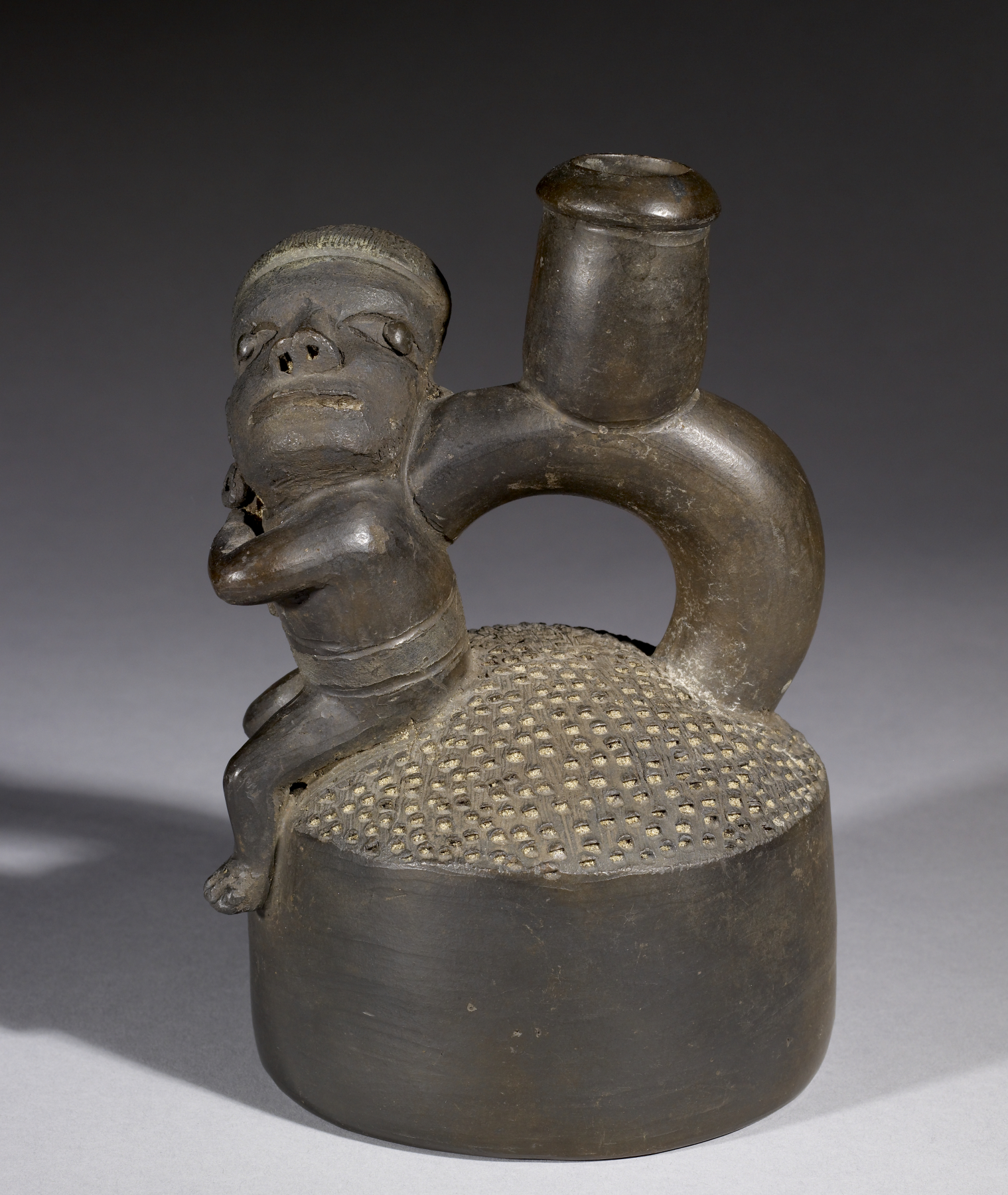Stirrup Vessel with Figure
(Ancient Americas )
This “stirrup-spout” vessel shows a human or humanlike figure sprawled on the top of the container, in the process of cutting off his own head. Human sacrifice was a ritual practice in ancient Peru, and it seems that some individuals may have even offered their own lives for what they believed would have been the benefit of their whole community. In this view, their blood would have nourished the earth, which in turn would produce more abundantly for the community in question. It is unclear whether this represents an actual practice, or perhaps a mythological narrative.
The “stirrup spout” was one of the most common vessel forms in pre-Columbian Peru and the Andean area. A short spout at the top is attached to two tubes which join with the vessel itself. The form is reminiscent of a stirrup for horseback riding, hence the name. The resulting container was beautiful and versatile, since the main vessel could be shaped into many different forms, with a surface that was either carefully polished or highly textured. These vessels were also practical: in the extremely dry deserts of Peru, such a narrow opening prevented evaporation of the liquid held within. The complex shape of the neck also meant that it was easy to carry: two such vessels could be tied to the ends of a cord, to be slung over a person’s shoulder or a llama’s back. Large numbers of vessels like these have been found in burials of elites on the north Coast of Peru beginning about 1800 BCE.
Provenance
Provenance (from the French provenir, 'to come from/forth') is the chronology of the ownership, custody, or location of a historical object. Learn more about provenance at the Walters.
Economos Works of Art, Santa Fe, New Mexico [date and mode of acquisition unknown]; Private collection, 1991, by purchase; Walters Art Museum, 2009, by gift.
Geographies
Peru (Place of Origin)
Measurements
H: 7 1/2 x W: 5 x D: 4 3/4 in. (19.1 x 12.7 x 12.07 cm)
Credit Line
Anonymous gift, 2009
Location in Museum
Not on view
Accession Number
In libraries, galleries, museums, and archives, an accession number is a unique identifier assigned to each object in the collection.
In libraries, galleries, museums, and archives, an accession number is a unique identifier assigned to each object in the collection.
48.2837






